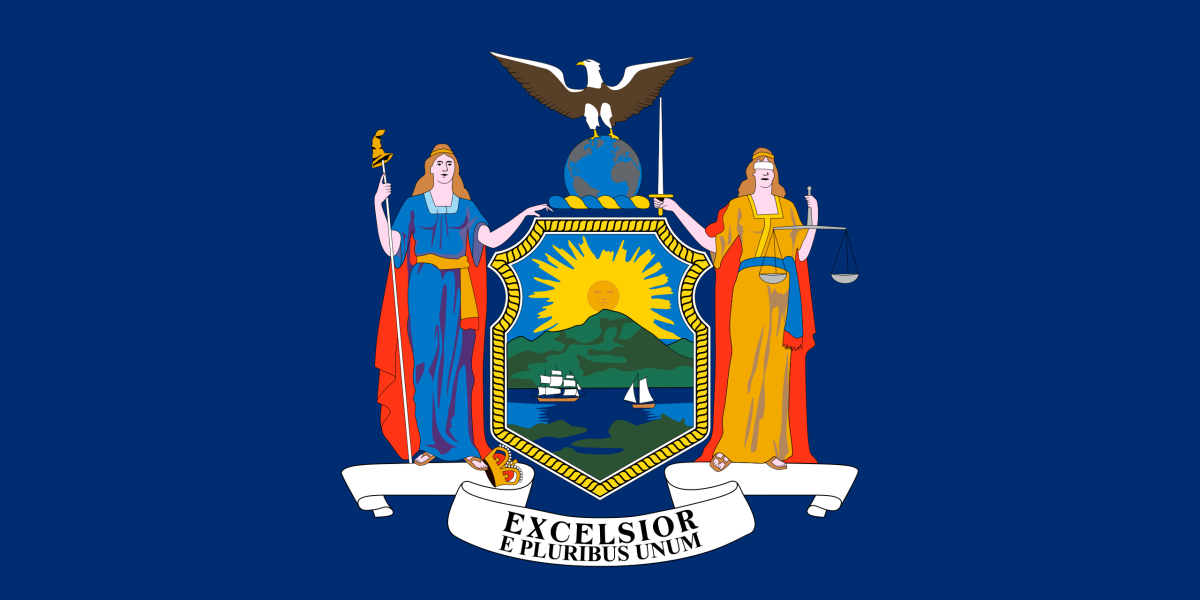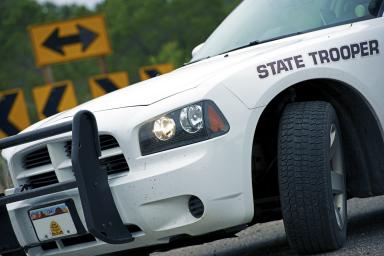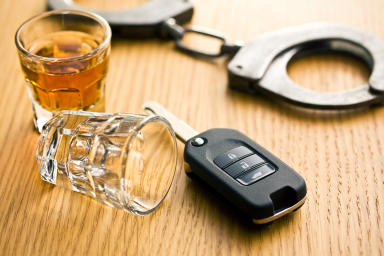New York DUI Laws

In 2022, there were a total of 1,994 vehicles involved in crashes caused by drunk drivers in New York. Within the same year, the state saw 943 traffic fatalities, with 363 arising from alcohol-related motor vehicle accidents. This data falls within the state’s annual average of fatal crashes due to intoxicated driving, which is over 30%. According to the New York State Police, an injury due to an impaired driver occurs every two minutes, highlighting the relative prevalence of alcohol-related crashes throughout the state and the country.
To combat the occurrence of such mishaps, government agencies in New York often work together to launch and maintain initiatives that promote awareness against drunk driving and reduce the presence of intoxicated drivers on state and local roads. One of their previous campaigns was Vision Zero, which aimed to prevent drunk driving accidents during the 2022 holiday season and advocated for state legislation to enforce a stricter blood alcohol content limit of 0.05%.
Outside of these programs, New York continues to enforce traffic laws that penalize those who operate a vehicle while under the influence of alcohol. This article enumerates and explains these laws alongside the statutory guidelines that drunk driving accident victims will often encounter when they pursue a lawsuit against an intoxicated motorist.
General DWI Laws and Guidelines in New York
New York categorizes drunk driving offenses differently based on a number of factors. A motorist is charged with driving while intoxicated if their BAC level is equal to or greater than 0.08%, which is the “per se” limit in the state. Commercial vehicle drivers follow a stricter limit of 0.04%, while those under the age of 21 must not reach 0.02% as defined by the state’s zero tolerance law.
A motorist whose BAC level is below the limit can still be convicted of DWAI — or driving while ability impaired — if their capacity to operate a vehicle is negatively affected by intoxication. The same counts if they are under the effects of any drugs, in which case they will be charged with a “drug-DWAI” offense.
A standard DWI charge can escalate into aggravated DWI if the offender’s BAC level reaches or exceeds 0.18%, or if they were found driving with a passenger who is 15 years old or younger. If a person commits another aggravated DWI offense within 10 years of the previous one, they will be charged with felony aggravated DWI. On the other hand, those who are impaired due to a mixture of alcohol and drugs can be charged with a “combination-DWAI” offense. These violations typically result in harsher penalties.
New York’s Implied Consent Law
New York also imposes an implied consent law, which states that any motorist who chooses to operate a vehicle is deemed to have automatically given their consent to undergo a chemical test that will measure their BAC level. This test is typically carried out for motorists who are involved in an accident or are suspected of violating drunk driving ordinances.
Those who refuse to submit to a test will be penalized accordingly, even if they end up not being guilty of a DWI or DWAI offense. Their refusal can also be treated as admissible evidence in a resulting hearing regarding their DWI or DWAI infraction.
What Are the Penalties for a DWI in New York?
Any New Yorker who violates the state’s alcohol-related DWI and DWAI ordinances faces varying penalties, with every subsequent set of sanctions becoming increasingly stricter with each offense committed within a given amount of time. DWI violations are classified as either misdemeanors or felonies, depending on the number and type of offenses a motorist has committed. On the other hand, first and second DWAI offenses are treated as traffic infractions.
The DWAI penalties in New York are as follows:
Meanwhile, the following are the penalties for DWI offenses:
Any motorist who is found guilty of a combination-DWAI offense will face the same sanctions imposed on DWI offenders. If a person is convicted of aggravated DWI, they will be sentenced to the same jail time as those convicted of DWI, with the minimum fine being higher at $1,000. They will also have their license revoked for a minimum of one year on their first offense and 18 months on their second and subsequent offenses.
Additionally, under Leandra’s Law, those who are charged with a DWI or aggravated DWI offense in New York must drive with an ignition interlock device in their vehicle as a requirement for probation or a conditional discharge. The device must remain in use for a minimum of 12 months, unless the court declares otherwise.
Underage motorists who are convicted under New York’s zero tolerance law will have their license suspended for six months. They will be fined $125, with an additional $100 required to have their license suspension terminated. If they commit a second offense, their license can be revoked for at least one year or until they reach the age of 21.
Lastly, those who violate New York’s implied consent law by refusing to submit to a chemical test face the following penalties:
New York’s Dram Shop Law
New York is among the states in the country that allow drunk driving accident victims to sue an alcohol-licensed establishment for contributing to their injuries and losses in a separate action. This can occur in line with the state’s Dram Shop Act, where a bar, restaurant, or liquor store can be held liable if they serve or sell alcohol to a motorist who is under the age of 21 or already visibly intoxicated.
To prove a liability claim against an establishment, the following elements must be present:
The establishment in question unlawfully served alcohol to an underage motorist or one who was already visibly drunk.
The establishment’s service or sale of alcohol contributed to the motorist’s intoxication.
The motorist caused an accident due to intoxication, which resulted in another person’s injury.
If a victim’s parents are entitled to recover damages, either parent can file a lawsuit or claim against a liable establishment. However, one parent will be barred from filing a suit if the other has already pursued recovery. If a person dies as a result of an alcohol-related accident, their right of action will be inherited by the administrator of their estate, who can file a wrongful death claim alongside a suit stemming from the Dram Shop Act.
New York also has a social host liability law that holds the hosts of parties or gatherings liable for furnishing alcohol to an underage driver who then goes on to cause an accident. However, unlike the Dram Shop Act, this law does not apply to those who give alcohol to visibly drunk motorists who are within the legal drinking age.
How Much Can Someone Sue for a Drunk Driving Injury in New York?
New York law does not impose any statutory limitation on the total compensatory damages that can be recovered in personal injury cases. As such, those who have suffered harm in a drunk driving accident may pursue and recover the full extent of their losses from the offending motorist. In general, compensatory damages refer to both economic and non-economic losses, such as:
Costs for present and future medical treatments.
Repairs and/or replacements for damaged property.
Lost income, loss of earning capacity, or loss of work opportunities due to injury.
Funeral and burial expenses (if the victim died from the accident).
Pain and suffering.
Emotional distress.
Loss of companionship.
Loss of enjoyment of life.
In addition to these damages, a plaintiff can file a claim for punitive damages if there is enough evidence proving that the defendant showed willful or wanton conduct, or a reckless disregard for the safety of other people. Like in the case of compensatory damages, there is no cap on the amount of punitive damages that can be awarded to a plaintiff. However, the court can reduce a punitive damage award if it exceeds reasonable and legal standards.
New York’s Pure Comparative Negligence Rule
While there are no limits to the compensatory and punitive damages that can be awarded to drunk driving accident victims in New York, a plaintiff’s damage award can be affected by the state’s pure comparative negligence rule. Generally, this legal principle deducts a plaintiff’s total awarded damages if the court determines that they are partially liable for the incident that caused their injury.
The percentage reduced from a damage award is equal to the percentage of the plaintiff’s assigned fault in a case. For example, a drunk motorist who collides with a speeding driver may be the main cause of a crash, but the court can also declare that the victim was 20% responsible for the accident because they were speeding at the time. If the victim is awarded $200,000 in damages, they will only recover up to $150,000 after 20% has been deducted in accordance with their apportioned fault.
It should be noted that New York’s pure comparative negligence rule allows plaintiffs to recover damages even if they are deemed 99% at fault for the accident. This contrasts greatly with the principle of modified comparative negligence that is followed in other states, where a person will be totally barred from recovery if their fault is equal to or greater than a given percentage.
The Statute of Limitations in New York
Under New York’s civil statute of limitations, people who are injured by drunk drivers have a maximum of three years to take legal action. This applies to those who suffer injuries or only damage to their property. Any plaintiff who fails to file a lawsuit within this given deadline will risk having their case dismissed by the court if they ever attempt to file after three years. The statute begins counting down from the date of the accident that caused a person’s injury.
If the victim of an alcohol-related crash dies from their injuries, the administrator of the decedent’s estate will be given only up to two years to file a wrongful death claim. Unlike in standard personal injury cases, the statute of limitations for a wrongful death action will begin on the date of the victim’s passing instead of the underlying accident.
Exceptions to New York’s Statute of Limitations
New York has certain exceptions that delay or pause its civil statute of limitations in personal injury cases, granting people more time to file a case. One such example involves scenarios wherein the person who is entitled to take legal action is either under the age of 18 or deemed legally disabled due to an “unsound mind.” State law dictates that the clock will only begin counting down once the individual turns 18 or recovers from their mental disability. However, the deadline cannot be extended beyond 10 years from the date of the incident that caused the person’s injury or losses.
Another possible exception involves a defendant who either leaves the state for at least four months or hides within the state under a “false name” after injuring a victim. According to New York law, the period of the defendant’s absence or concealment will not be counted as part of the statute of limitations’ duration.
Resources for Folks Injured by an Impaired Driver in New York
New York State Bar Association
The New York State Bar Association provides online assistance to any New Yorkers who have inquiries or are involved in various cases. It has a Lawyer Referral Service that allows people to find attorneys that will address their concerns in a 30-minute preliminary consultation for a fee of $35; this fee is waived for those who are involved in personal injury matters. Its website also offers access to downloadable pamphlets that provide a basic understanding of different areas of state law through the LEGALease Online section. Additionally, the organization can redirect citizens to other platforms and groups that can offer legal assistance, including the New York State Unified Court System’s CourtHelp website and Law Help NY.
New York Department of Motor Vehicles - Auto Accident Reports
The New York Department of Motor Vehicles compiles accident reports for up to four years from the date of a crash on its website. New Yorkers can order and download a copy of an accident report for $15, with an additional $7 online search fee ($10 if by mail). The department’s website offers information on how to submit requests for a report using a DMV accident case number or the license and plate numbers of the vehicles involved. A report is made available on the department’s system between 14 and 60 days from the date it was filed. Once a report has been purchased, it becomes available for downloading for up to one week, after which it must be purchased again. For additional queries, the NY DMV can be reached through its call centers at either 1-518-486-9786 or 1-800-698-2931.
Mothers Against Drunk Driving - New York
New Yorkers injured by intoxicated motorists can seek legal assistance from Mothers Against Drunk Driving, a nonprofit organization that is dedicated to offering aid to impaired driving victims throughout the country. Its team can help people navigate legal proceedings by assisting them in making statements, providing them with resources that are relevant to their case, and accompanying them in court. It can also connect victims with emotional support groups and other survivors of drunk driving accidents to help with their post-accident recovery. Those who wish to seek help from MADD can contact the organization’s 24-hour victim hotline at 1-877-623-3435.
Expertise.com StaffAuthor
Step into the world of Expertise.com, your go-to hub for credible insights. We don't take accuracy lightly around here. Our squad of expert reviewers, each a maestro in their field, has given the green light to every single article you'll find. From rigorous fact-checking to meticulous evaluations of service providers, we've got it all covered. So feel free to dive in and explore. The information you'll uncover has been stamped with the seal of approval by our top-notch experts.




